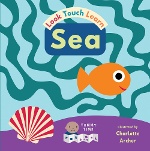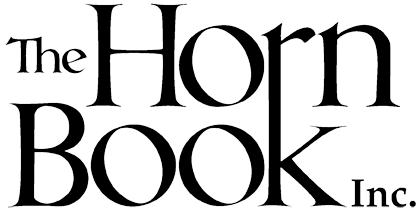Baby-Testing Board Books: A Report and a Roundup from a Margaret Wise Brown Board Book Award Jury Member
In January, 2023, the first jury of the Margaret Wise Brown Board Book Award met online to select the recipients of this nascent award administered by the Children’s Book Committee at Bank Street College of Education. I was happy to be among this great group of professionals serving on the jury, under the leadership of Dr. Cynthia Weill, director of the Center for Children’s Literature...
In January, 2023, the first jury of the Margaret Wise Brown Board Book Award met online to select the recipients of this nascent award administered by the Children’s Book Committee at Bank Street College of Education. I was happy to be among this great group of professionals serving on the jury, under the leadership of Dr. Cynthia Weill, director of the Center for Children’s Literature; Perri Klass, national medical director, Reach Out and Read; Leonard S. Marcus, children’s literature historian, author, and critic; Mark Nagasawa, director, Straus Center for Young Children & Families, Bank Street College of Education; Takiema Bunche Smith, senior advisor, Center on Culture, Race & Equity, Bank Street College of Education; and Ofelia García Otheguy, professor emerita, The Graduate Center, City University of New York.
The jury reviewed a wobbly stack of seventeen board books curated by the members of Bank Street’s Children’s Book Committee. As our winners, we selected Give Me a Snickle! by Alisha Sevigny (Orca) for excellence in books for children 0–18 months and Me and the Family Tree by Carole Boston Weatherford, illustrated by Ashleigh Corrin (Sourcebooks Jabberwocky) for children 19–36 months. These two gems celebrate, through playful verse and lovely artwork, the vitality of familial and human connections.
While I can’t share specifics about our jury deliberations, one question I’ve gotten about the process is how we obtained feedback about the contenders from children who may be too young to express fully their thoughts on books. This is vital information for any children’s literature award committee, particularly one aligned with Bank Street’s child-centered ethos. As Dr. Mollie Welsh Kruger, co-chair of the Children’s Book Committee, states, “We believe that children have something to say about the books that they read…and listen to. We are looking for the ways that they lean in, laugh, and ask questions.”
The staff of the Bank Street Family Center, an inclusive center that provides child-centered care for very young children, came to the jury’s rescue! The Center’s teachers received copies of the contenders with guiding questions adapted from the award’s criteria. The teachers read these titles with babies and toddlers and observed their engagement and interaction.
Jeannette Corey, director of the Family Center, shared this about their approach gaining feedback: “The teachers looked carefully at how children connected with the books. Did they sit and attend to the books for long periods of time? Did they comment on the books or point out pictures of interest to them? Did they ask that the books be re-read to them or seek out the books on their own? The teachers documented all of these behaviors and were able to see the choices the children were making about books.” When the committee members deliberated, these observations guided our selection.
While we looked to the award’s criteria as a guide, one important facet to the jury, and to the Children’s Center’s teachers as well, was that infants and toddlers see themselves reflected in the books, and not just in Mylar mirrors embedded on some of their final pages. “Since infants and toddlers make so much meaning from the visuals in books, seeing themselves and their families represented in illustrations and photos is critical,” says Corey.
After the winners were selected, the Bank Street Center for Children’s Literature, in partnership with KidLit TV as led by the talented Julie Gribble, created a beautifully produced award celebration and educational program you can view here. This event featured award acceptance speeches by the winners, a vital keynote by Dr. Klass on the essential role board books play in development and pediatric practice, and a panel discussion, which I had the privilege to moderate, featuring board book creators, including winner Carole Boston Weatherford, talking about their craft.
It has been a delight to see such enthusiasm for the launch of this award and announcement of the winners. Corey summed it up best: “Launching an award like this shows the importance of board books. We hope that people who care for and about very young children are inspired to make careful book choices for children in the same ways they would for older children.”
What will the next winners of the award be? We will have to wait until 2025 for the winner(s) of the biennial MWB Award to be announced. To tide you over, here are some of my recent favorites.
 Sea [Look Touch Learn]
Sea [Look Touch Learn]
illustrated by Charlotte Archer (Child’s Play)
This versatile accordion-fold book works as a backdrop for tummy-time play and is enjoyable as a lap read. Archer’s bold graphics in bright colors are a mix of close-ups, patterns, and simple scenes, all employing ocean imagery as a unifying theme. There are a variety of tactile elements, including smooth foil simulating fish scales and raised embossing as bumps on starfish. The text, solely consisting of labels and sensory vocabulary, appears on every other page. There is a large hole with a hanging element securely attached by a ribbon depicting a fish on one side and sea turtle on the other. Guidance for parent and caregiver readers on how to share this unconventional book is provided on the last page, with a note that Professor Anna Franklin of the Sussex Baby Lab provided guidance on the series’ development. The companion book in the series is titled Sky.
 Baby, Sleepy Baby
Baby, Sleepy Baby
by Atinuke, illus. by Angela Brooksbank (Candlewick)
While I am delighted that a hardcover version of this gorgeous and lyrical nighttime reverie exists, I am over the moon (pun intended) that it is now in board book. Several grown-up members of a multiracial family poetically describe how they will gather natural elements to cuddle and soothe a babe with curly brown hair and brown skin: “Baby, lovely baby, I’ll pull down the black sky / to wrap you in night’s soft blanket.” Atinuke’s dreamy poetry reads like a lullaby, and Brooksbank’s magical art is playful and soothing at the same time. While the full-size, hardcover version is a stunner, parents and caregivers will appreciate a trim size that is easier to share with little ones. Another baby-centered offering, Lucy Knisley’s wonderful celebration of babyhood, You Are New (Chronicle), has also been released in board book form this year.
 Jazzy in the Jungle
Jazzy in the Jungle
by Lucy Cousins (Candlewick)
While the titles listed above came out in board book form one to two years after their hardcover editions, as is the trend, we had to wait twenty-one years to see Jazzy and company in board books. The shaped pages and die-cut holes, which gradually let Mama JoJo and the reader search for the titular baby lemur, are a natural for the format. As pages are flipped, the scenes change, hiding what has come before and revealing something new. While the trim size is smaller, none of Cousins’s richly colored rainforest fantasia is shortchanged, cropped, or cut. For another title about a rarely depicted parent-and-child animal dyad, look for Little Walrus by Julie Abery, illustrated by Suzie Mason, in the Little Animal Friends series (Amicus).
 Big Kids No Everything
Big Kids No Everything
by Wednesday Kirwan (Little Simon)
In this playful, and dare-I-say positive, take on the word “No,” a diverse group of toddlers utter their signature reply. Each double-page spread depicts a different mini-drama, from the realistic (a “hangry” meltdown at the grocery store) to the whimsical (a tot says “NO” to a Godzilla-like creature looming over a city). As the text notes, “There are small nos, and there are BIG nos. Loud nos. And quiet nos.” Kirwan taps into the toddler drive for independence without judgment and honors this as a needed developmental stage. Her thickly outlined cartoons are mischievously universal.
 A Beautiful House for Birds [Storytelling Math]
A Beautiful House for Birds [Storytelling Math]
by Grace Lin (Charlesbridge)
Lin, in her Storytelling Math series, playfully illustrates simple math concepts through delightful preschool vignettes. Here, a young girl paints the roof of her bird house with a striped pattern. When she gets distracted by the arrival of bird visitors and makes an error in her pattern, she turns the situation around by incorporating this “oops” into her sequence. Three children, who appear diverse in race and gender expression, act as repertory players in Lin’s additions to this series, all supplying direct and clear first-person narratives. Lin’s signature style, employing bold colors and thick, black outlines, is in top form here. Also arriving this year are Where Are the Eggs?, tackling spatial sense, and Our Favorite Apples, illustrating sorting and classifying.
 Hello, Baby [Little Languages]
Hello, Baby [Little Languages]
by Little Bee Books, illus. by Stephani Stilwell (Little Bee)
This charmer shares greetings in fifteen languages, including Chinese, Swahili, Hindi, Navajo, and Portuguese. Each page follows a reassuringly predictable formula: includes a delightful baby photo with a round frame and colorful background, a caption describing what the kiddo is doing, and then a greeting to the child phonetically spelled out in the English alphabet. These children look to be racially and internationally diverse; one child uses ASL, and another looks to have Down syndrome. The final page includes a helpful chart listing all greetings, their pronunciations, and how they would be written in any non-Roman characters, if applicable.
 How Are You?
How Are You?
by Édouard Manceau (Twirl)
An expressive, purple face with the hint of blue body answers the titular question: “How are you?” This Muppet-like creature shares a qualified answer that appears on the left-side page in a bold white font, while making a matching facial expression with emoji-esque simplicity across the page. Manceau does an amazing job demonstrating a variety of emotional states with the absence or presence of a mouth, eye shape, and changes in hue. While social-emotional learning is all the rage, this book, translated from French, addresses it skillfully, without preaching, and while modeling self-care in a few short pages.
 Look, It’s Roar Roar Lion
Look, It’s Roar Roar Lion
by Camilla Reid, illus. by Clare Youngs (Nosy Crow)
Felt flaps, a more recent board-book innovation, are popping up more and more. Here, small brightly colored felt swatches hide a ladybug, a snail, a frog, and more in double-page scenes featuring such larger animals as a lion, a zebra, a hippo, and a monkey. Reid’s text is a simple formula with each critter sharing their signature sound effect with an invitation to seek the smaller creature under the flap. In the illustrations, Youngs manages to balance stylized artwork with recognizable depictions that language-learning youngsters can recognize. A Mylar mirror embedded on the back cover and under the largest felt flap invites little ones to share what they say. The companion book is Look, It’s Woof Woof Dog. For more felted flaps, try two offerings in the Little Peekaboos series: Good Night, Sleep Tight and Eyes, Ears, Nose, and Toes by Sophie Aggett (Tiger Tales).
 Who Am I?: Playful Pets
Who Am I?: Playful Pets
by Luke Robertson, illus. by Sally Payne (Igloo)
Many books employ shaped flaps, felt flaps, or even layered flaps, but there is a lot to be said for the simplicity, sturdiness, and satisfaction of opening full-page flaps for a guessing-game reveal. In this offering, the flaps keep unfolding as more of the animal is shown, accompanied by queries that include information about the pet’s qualities to help children guess: “Who has a hard, round shell? / And round, scaly feet? / It’s a tortoise!” Other pets depicted are a cat, rabbit, a goldfish, and a dog. Payne’s art is playful yet recognizable. The companion title is Who Am I?: Wild Animals.
 Peek-a-Boo Haiku
Peek-a-Boo Haiku
by Danna Smith, illus. by Teagan White (Little Simon)
Through tableaux taking us through the seasons of the year, readers are presented with a haiku and one or two flaps in each delicate forest scene. Youngsters may not know which animal the haiku is referring to until a flap is lowered or lifted for the reveal. My favorite of Smith’s charming poems reads: “eyes shine beneath pine / heavy snow slips from branches / plop — a winter hat!” Under the flap on this page, toddlers discover a red fox with a hat-shaped pile of fallen snow on its head. The flaps blend seamlessly into the flora of each scene with a helpful indentation to guide little fingers. For another playful lift-the-flap offering starring forest animals, open Squeak-a-Boo! by Natasha Wing, illustrated by Grace Habib (Abrams Appleseed).
 India [Our World]
India [Our World]
by Meera Sriram, illus. by Neethi (Barefoot Books)
A youngster and mom in India enjoy everyday activities, such as bathing, getting dressed, and playtime, from sunup to sundown. What this title, like the other travelogues in the series, does so well is balance universality and specificity. While many children love to watch vehicles or enjoy playing dress-up in grown-up clothes, this kiddo is excited by an auto-rickshaw and plays peek-a-boo with Ma’s sari. The direct and clear narration by Indian-born Sriram is enlivened by gorgeous, jewel-toned, and culturally specific artwork by Bangalore-based artist Neethi. Other titles in the series, also penned by natives or residents of the country in question, include excursions to Brazil, Egypt, France, Italy, Japan, and Mexico. For a trip potentially a bit closer to home, visit William Low’s Welcome to Chinatown (Godwin Books) for a bilingual (English/Chinese) tour of the neighborhood.
 Kind Crocodile
Kind Crocodile
by Leo Timmers (Gecko), trans. from Dutch by Bill Nagelkerke
In this import translated from Dutch, a kindly (and potentially vegetarian?) crocodile saves a mouse, a warthog, and a gazelle from predators by letting them stand on the croc’s back, Bremen-town-musician style, while the reptile growls. This scheme works until a rhinoceros needs rescuing and inadvertently squishes the crocodile. The critters realize the power of acting as a team and that their kindly friend has a mischievous streak in an amusing twist. Timmers’s droll, simple cartoons include masterful facial expressions and sophisticated texturing. The wide, landscape-oriented pages, evoking the African savanna, are a perfect setting for the action. For another title in translation about playful critters, take a crack at Little Chicks by Taro Gomi (Chronicle).
 This is My Body — I Get to Choose
This is My Body — I Get to Choose
by Brook Sitgraves Turner, photos by Kati Douglas (Little Feminist)
Little Feminist Press is trying on a new board-book–adjacent format, which is often categorized as hardcover but is jacketless and employs stiffer-than-usual pages. It’s perfect for youngsters graduating from board books. Here they tackle the topic of consent, explored through photos and clear language. People of all backgrounds and abilities model how youngsters can say yes to a fist bump or a hug and how to say stop or no when things get too much. The back matter gives guidance to adults for how to begin these conversations with babies through six-year-olds. Others in the series are Little Faces Big Feelings by Amy Morrison and All of Me Is Nature by Ashley Renee Jefferson; illustrated by Kristiana Vellucci. For another book addressing consent and body positivity, check out the next title in the First Conversations series, Every Body by Megan Madison and Jessica Ralli, illustrated by Tequitia Andrews (Rise x Penguin Workshop).
 Bear Has a Belly [Big, Little Concepts]
Bear Has a Belly [Big, Little Concepts]
by Jane Whittingham (Pajama Press)
Pajama Press, based in Canada, has taken an innovative approach to publishing preschool books. First, they release a “Toddler Tough” edition, jacketless hardcovers with thicker-than-normal pages. Then, typically the next year, they publish board books editions of the same titles. In 2022, the “Toddler Tough” version of Bear Has a Belly came out and this year I am pleased to see the release of the board book is on the way. In either format, Whittingham notes the similarities between humans and non-human animals: “Owl has eyes — Big, round eyes. Owl has eyes. I do too!” A large photo of the animal in question appears on the left-hand side with a human kid across the spread using the body part in question. For a side-by-side look at human and animal actions, pick up Animals Move in the same series and for another adorable human-animal comparison, try The Babies and Bunnies Book by John Schindel and Molly Woodward (Clarion Books).

RELATED
ALREADY A SUBSCRIBER? LOG IN
We are currently offering this content for free. Sign up now to activate your personal profile, where you can save articles for future viewing.







Add Comment :-
Be the first reader to comment.
Comment Policy:
Comment should not be empty !!!